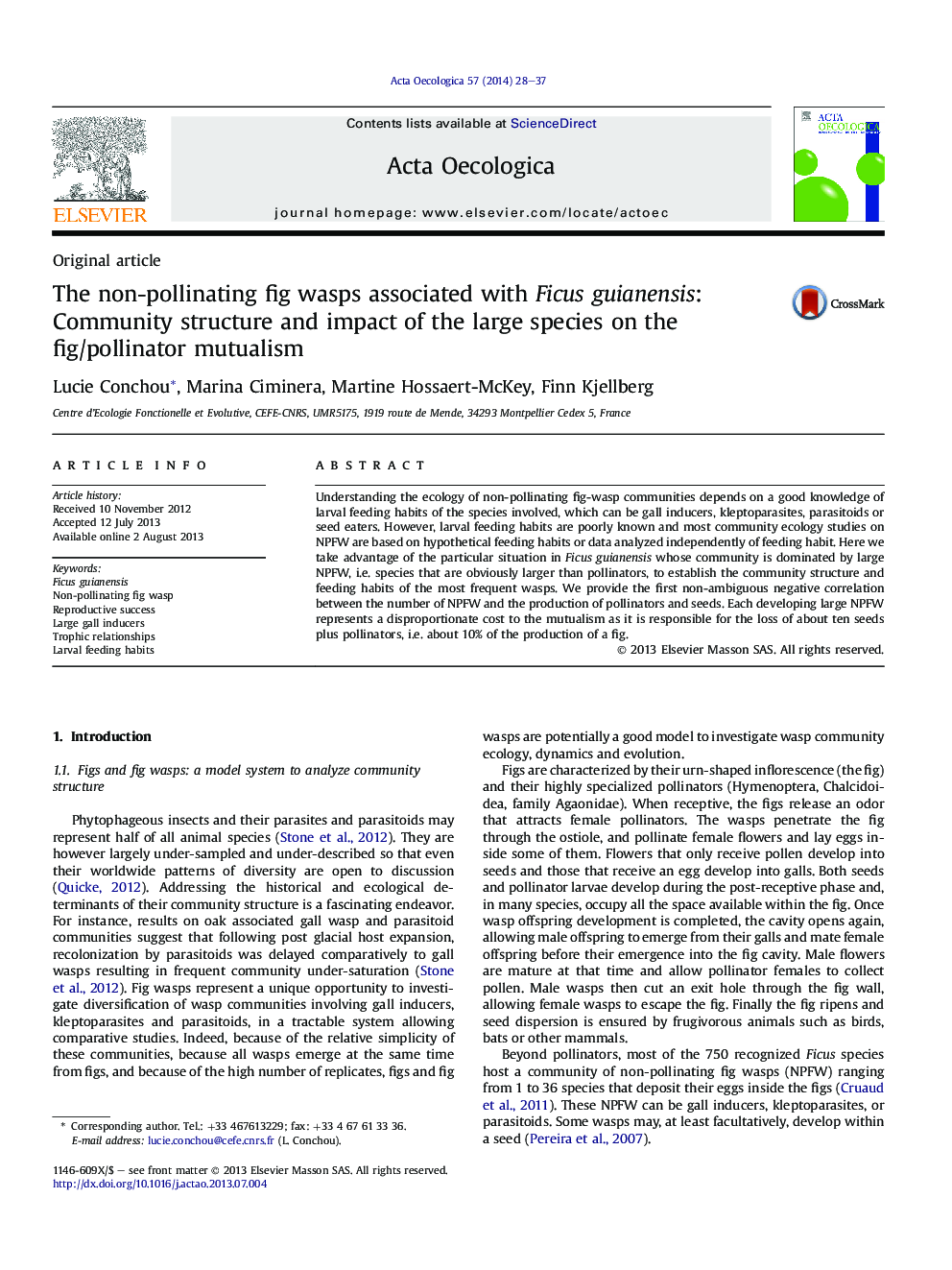| Article ID | Journal | Published Year | Pages | File Type |
|---|---|---|---|---|
| 4381035 | Acta Oecologica | 2014 | 10 Pages |
•The NPFW community associated to Ficus guianensis is dominated by 3 large species.•Two of them are gallers and the third is either kleptoparasite or parasitoid.•Large gallers may oviposit early in fig development but also at fig pollination time.•Large NPFW galls cause a significant decrease of pollinator and seed production.•Each large gall causes the loss of several pollinator larvae and seeds.
Understanding the ecology of non-pollinating fig-wasp communities depends on a good knowledge of larval feeding habits of the species involved, which can be gall inducers, kleptoparasites, parasitoids or seed eaters. However, larval feeding habits are poorly known and most community ecology studies on NPFW are based on hypothetical feeding habits or data analyzed independently of feeding habit. Here we take advantage of the particular situation in Ficus guianensis whose community is dominated by large NPFW, i.e. species that are obviously larger than pollinators, to establish the community structure and feeding habits of the most frequent wasps. We provide the first non-ambiguous negative correlation between the number of NPFW and the production of pollinators and seeds. Each developing large NPFW represents a disproportionate cost to the mutualism as it is responsible for the loss of about ten seeds plus pollinators, i.e. about 10% of the production of a fig.
